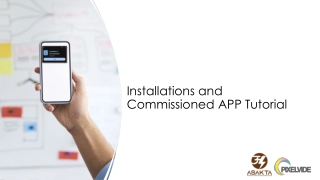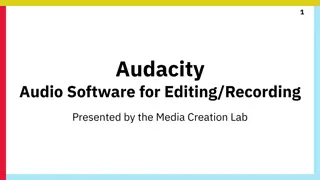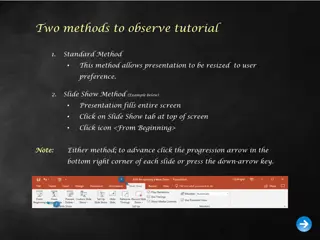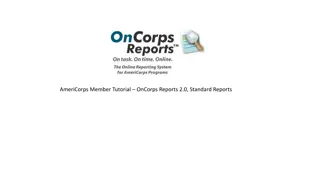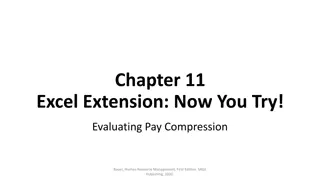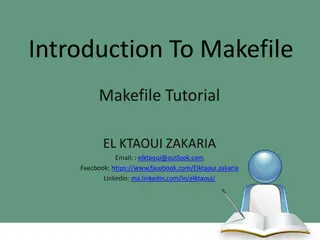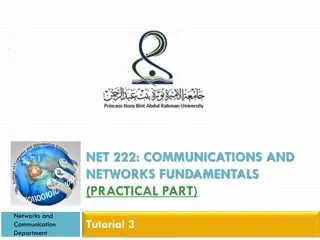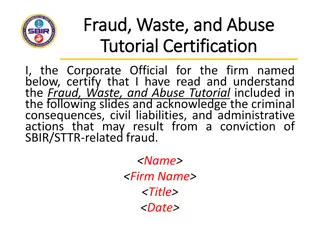
Avoiding Common Mistakes in Questionnaire Design
Learn about the importance of validity and reliability in questionnaire design, types of questions and variables, and common mistakes to avoid. Discover key tips to ensure respondent confidentiality, question clarity, and effective data collection. Enhance your survey methodology for accurate and insightful results.
Download Presentation

Please find below an Image/Link to download the presentation.
The content on the website is provided AS IS for your information and personal use only. It may not be sold, licensed, or shared on other websites without obtaining consent from the author. If you encounter any issues during the download, it is possible that the publisher has removed the file from their server.
You are allowed to download the files provided on this website for personal or commercial use, subject to the condition that they are used lawfully. All files are the property of their respective owners.
The content on the website is provided AS IS for your information and personal use only. It may not be sold, licensed, or shared on other websites without obtaining consent from the author.
E N D
Presentation Transcript
Questionnaire Design Dr Amna Rehana Siddiqui Dr Armen Torchyan, MD MPH October, 2013
OBJECTIVES OBJECTIVES Validity and reliability of Instruments Main mistakes in preparing questionnaires Types of questions Types of variables
Main Mistakes (Introd.) An introduction should: Include the name of the organization conducting the survey, to ensure the validity to the respondent (in some special cases a blind survey is required, and the name will not be given) Let the respondent know how long the interview will take Let the respondent know that their responses will be confidential and anonymous
Main Mistakes (Q1) 1. Personal information, such as income, should always be kept until the end of the interview 2. Use of pre-coded income categories 1. less than 4000 2. 4000 - 7999 Categorical Variable (Ordinal) 3. 8000-13999 4. 14000 or above 77. Refused For continuous variables like age, height, weight, etc. avoid using pre-coded options 99. Don't know
Main Mistakes (Q2) Use simple, clear language fitness and recreation opportunities , or sports and fitness activities 1. Yes 2. No Categorical Variable (Nominal) 77. Refused 99. Don't know
Main Mistakes (Q3) Avoid asking aided awareness questions. Keep questions short. Q3. Have you recently seen, read, or heard anything about fitness and recreation programs in your community? 1. Yes 2. No 77. Refused 99. Don't know
Main Mistakes (Q4) Don t ask two different questions and give one response category Divide into two questions 1. 2. 77. Refused 99. Don't know Are you currently a member of a gym or fitness club? Yes No Categorical Variable (Nominal) 1. 2. 77. Refused 99. Don't know Do you participate in any regular physical fitness program? Yes No
Main Mistakes (Q5) Use skip pattern if necessary Q.4 Are you currently a member of a gym or fitness club? 1. 2. 77. Refused 99. Don't know Yes No ---------> Go to Question 6 Q.5 Please tell me what regular physical activity you participate in. Open-Ended Question ____________________
Main Mistakes (Q6) Keep related questions together Don t use abbreviations (PSA public service announcement) Q.6 Where did you read, see, or hear this information? 1. 2. 3. 4. 77. Refused 99. Don't know Radio TV Weekly Newspaper Daily Newspaper Categorical Variable (Nominal)
Main Mistakes (Q7) Don t ask two different questions and give one response category Use the same format for the whole questionnaire Q.7 How would you rate the quality of the PSA(s) that you saw or heard? 1. 2. 3. 4. 5. 77. Refused 99. Don't know Excellent Good Fair Poor Terrible Categorical Variable (Ordinal)
Main Mistakes (Q8) Use simple, common language Record the action in a more objective, direct manner Q.7 Would you say that after sawing the advertisement in the media you started participating in local physical activity programs more frequently than before? 1. 2. 77. Refused 99. Don't know Yes No Closed-Ended Question
Main Mistakes (Q9) Don t use leading questions Keep related questions together What do you recall about the information that you read, saw, or heard? Open-Ended Question _______________
Main Mistakes (Q10) The introduction tells that the information they give is confidential. Asking for personal information after ensuring confidentiality needs to be explained clearly, and the respondent reassured that their name will not be associated with their responses. The best way to do so is to state why you are asking, and then give them the option to provide the information, otherwise it can lead to some hostility.
Reference book & page number Reference book & page number for the lecture resource for the lecture resource What's wrong with this questionnaire, The health communication unit, Dalla Lana School of Public Health, Toronto, Canada Ashry Gad Mohamed, Lecture on Questionnaire Design, College of Medicine & KKUH B. Hulley, Designing Clinical Research, Second Edition, Lippincott Williams and Wilkins, 2001 Shaikh Shaffi Ahamed, Lecture on Introduction to Biostatistics & Types of data, College of Medicine & KKUH
Thank you Questions?

